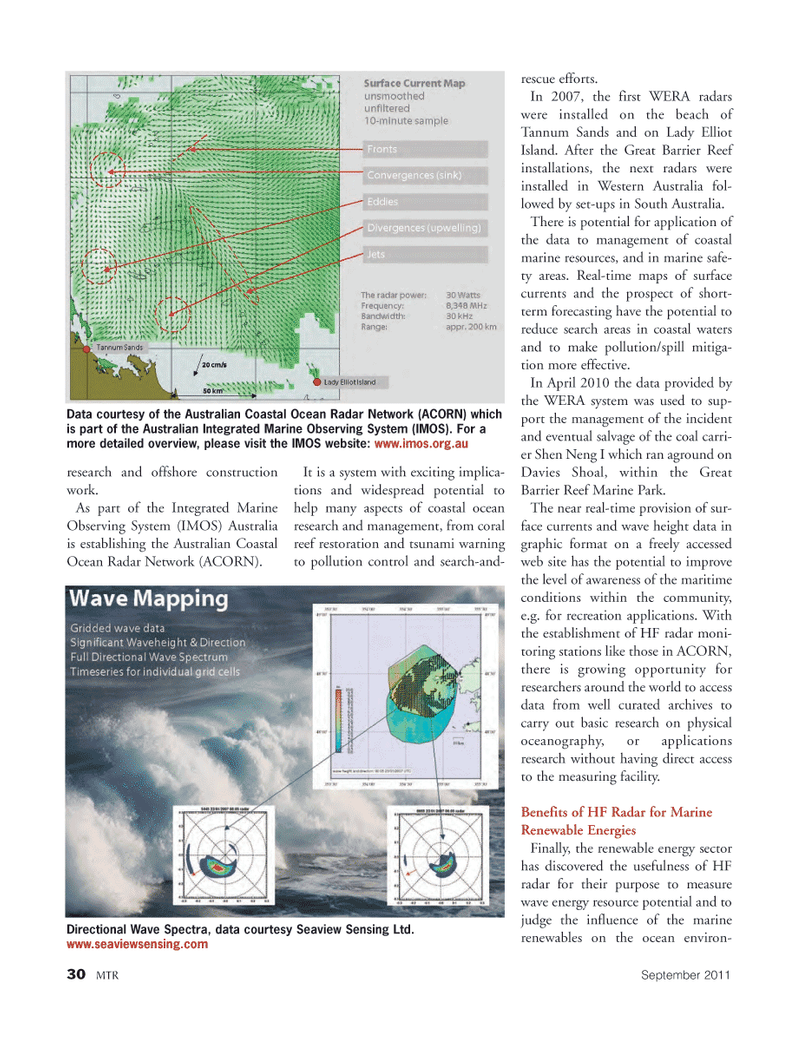
Page 30: of Marine Technology Magazine (September 2011)
Ocean Observation
Read this page in Pdf, Flash or Html5 edition of September 2011 Marine Technology Magazine
research and offshore construction work. As part of the Integrated Marine Observing System (IMOS) Australia is establishing the Australian Coastal Ocean Radar Network (ACORN). It is a system with exciting implica- tions and widespread potential to help many aspects of coastal oceanresearch and management, from coral reef restoration and tsunami warning to pollution control and search-and- rescue efforts. In 2007, the first WERA radars were installed on the beach of Tannum Sands and on Lady Elliot Island. After the Great Barrier Reef installations, the next radars were installed in Western Australia fol- lowed by set-ups in South Australia. There is potential for application of the data to management of coastalmarine resources, and in marine safe- ty areas. Real-time maps of surface currents and the prospect of short- term forecasting have the potential to reduce search areas in coastal waters and to make pollution/spill mitiga-tion more effective. In April 2010 the data provided by the WERA system was used to sup- port the management of the incident and eventual salvage of the coal carri- er Shen Neng I which ran aground on Davies Shoal, within the Great Barrier Reef Marine Park. The near real-time provision of sur- face currents and wave height data in graphic format on a freely accessed web site has the potential to improve the level of awareness of the maritime conditions within the community, e.g. for recreation applications. With the establishment of HF radar moni-toring stations like those in ACORN, there is growing opportunity for researchers around the world to access data from well curated archives to carry out basic research on physical oceanography, or applications research without having direct access to the measuring facility. Benefits of HF Radar for Marine Renewable Energies Finally, the renewable energy sector has discovered the usefulness of HF radar for their purpose to measure wave energy resource potential and to judge the influence of the marinerenewables on the ocean environ- 30MTRSeptember2011 Data courtesy of the Australian Coastal Ocean Radar Network (ACORN) which is part of the Australian Integrated Marine Observing System (IMOS). For a more detailed overview, please visit the IMOS website: www.imos.org.au Directional Wave Spectra, data courtesy Seaview Sensing Ltd. www.seaviewsensing.com MTR#7 (18-33):MTR Layouts 8/29/2011 10:00 AM Page 30

 29
29

 31
31
